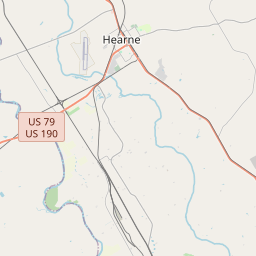Robert Cyrus Allen Home






(1871-1933) Had this Victorian residence built in 1900 as a wedding present for his bride Florence (Blair). A prominent area merchant, banker, and civic leader, Allen also served as mayor of the city and was instrumental in the organization of the Hearne and Brazos Valley Railroad. This house, constructed on the site of his family home, was designed by the noted Waco architect W. W. Larmour. The exterior features decorative shingling and classical revival detailing. Interior furnishings include intricate woodwork and seven fireplaces.
Recorded Texas Historic Landmark - 1981
Incise on base: Hearnewood - Preserved by Jack and Norma Holloway
As one of the most visible programs of the Texas Historical Commission (THC), historical markers commemorate diverse topics in Texas history, including: the history and architecture of houses, commercial and public buildings, religious congregations, and military sites; events that changed the course of local and state history; and individuals who have made lasting contributions to the state, community organizations, and businesses.
The first oil well in the United States was drilled in Texas in 1859. The discovery of oil transformed the economy of the state and helped to make Texas one of the wealthiest states in the nation.
In 1837, the Texas Congress officially established Robertson County as one of the original counties of the Republic of Texas. During this time, the county experienced rapid growth with the influx of settlers from the United States, particularly from southern states such as Tennessee, Mississippi, and Alabama. These settlers primarily relied on agriculture, with cotton becoming a major cash crop in the region.
The county also played a significant role in the Texas Revolution and the subsequent formation of the Republic of Texas. The Battle of San Jacinto, a decisive battle that secured Texas independence from Mexico, took place just outside the county's borders in April 1836. Several notable figures from Texas history, including Sam Houston, were also closely tied to Robertson County.
Over the years, Robertson County has continued to thrive, with the economy diversifying beyond agriculture. While farming and ranching still remain important industries, the county has also seen growth in manufacturing, healthcare, and tourism sectors. Today, Robertson County is known for its small towns, rural beauty, and historical sites, attracting visitors and residents alike with its charming Southern atmosphere and rich cultural heritage.
Robertson County Timeline
This timeline provides a concise overview of the key events in the history of Robertson County, Texas.
- 1837: Robertson County is established from Milam County.
- 1846: The first county seat, Springfield, is established.
- 1854: The county seat is moved to Owensville.
- 1870: The town of Calvert becomes the county seat.
- 1873: The Houston and Texas Central Railway reaches Calvert.
- 1890: The St. Louis Southwestern Railway reaches Hearne.
- 1925: A portion of Robertson County is used to create Falls County.
- 1942: Camp Hearne, a World War II prisoner-of-war camp, is established.
- 1987: The Hearne Southern Pacific depot is added to the National Register of Historic Places.